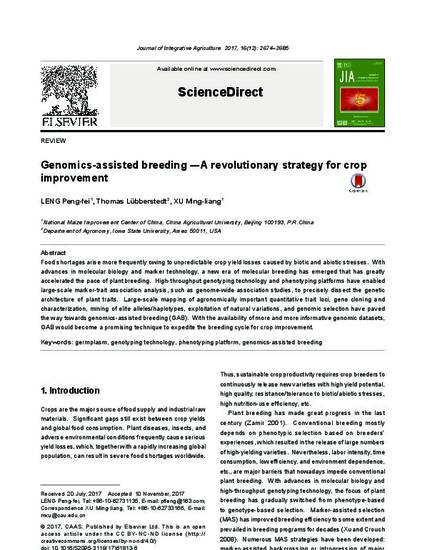
Food shortages arise more frequently owing to unpredictable crop yield losses caused by biotic and abiotic stresses. With advances in molecular biology and marker technology, a new era of molecular breeding has emerged that has greatly accelerated the pace of plant breeding. High-throughput genotyping technology and phenotyping platforms have enabled large-scale marker-trait association analysis, such as genome-wide association studies, to precisely dissect the genetic architecture of plant traits. Large-scale mapping of agronomically important quantitative trait loci, gene cloning and characterization, mining of elite alleles/haplotypes, exploitation of natural variations, and genomic selection have paved the way towards genomics-assisted breeding (GAB). With the availability of more and more informative genomic datasets, GAB would become a promising technique to expedite the breeding cycle for crop improvement.
Available at: http://works.bepress.com/thomas-lubberstedt/53/

This article is published as LENG, Peng-fei, Thomas Lübberstedt, and Ming-liang XU. "Genomics-assisted breeding–A revolutionary strategy for crop improvement." Journal of Integrative Agriculture 16, no. 12 (2017): 2674-2685. doi: 10.1016/S2095-3119(17)61813-6. Posted with permission.